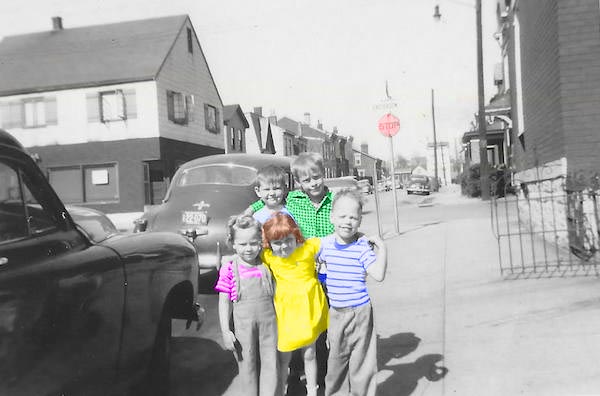Sign up for the Family Tree Newsletter Plus, you’ll receive our 10 Essential Genealogy Research Forms PDF as a special thank you!
Get Your Free Genealogy Forms
"*" indicates required fields

General photo-editing software
If you’re comfortable using advanced photo editing software, such as Photoshop, Photoshop Elements and GIMP (a free program that rivals Photoshop), you already have all the tools you need. You’ll find many tutorials on using those programs to colorize black-and-white photos on YouTube and elsewhere online. The process involves using layers, which is not terribly difficult, but still takes some practice. If you want a simpler way to add color to black-and-white pictures without having to master a complicated program, simple software that focuses on that one task might be just what you need.
Colorizing software
AKVIS Coloriage is one of the best programs for colorizing photos, though you’ll have to pay for the full version: $75 for either the plug-in or standalone versions of the Home License and $90 for the Home Deluxe License (which combines the plug-in and standalone options). Here’s how it works: Open a black-and-white image and decide how you’d like to color it. It has a library of common colors grouped into categories, such as eyes, hair, skin, wood, fabrics, sky and grass. Select an appropriate color and use the pencil to draw a rough outline around a section of the photo, such as a face, a shirt or the sky.
You don’t have to fill in the areas exactly, as the program detects uncolored shapes for you. You can zoom in to add color to small areas. Once you’ve outlined each area of the picture with a color, hit the button to colorize the picture and in a moment you’ll see the image in full color. If the results don’t look good, you can always go back and refine your colors. You may need to experiment with different colors to achieve a realistic look. You can change all strokes having the same color in one step with the Magic Tube tool.
You can also view tutorials showing how to apply color. The process goes fast if the picture has just a few broad areas of color, but it can take a long time to color many small areas. You can also use the program to replace colors in a picture, for example, allowing you to change a car from blue to red, or a flower from yellow to orange.
AKVIS Coloriage supports JPG, PNG, BMP and TIFF files, and boasts a large library of commonly used colors that you can easily select a range of tones from. The program is available as both a standalone program and as a plug-in that works with a photo editor like Photoshop, Photoshop Elements and PaintShop Pro. This allows you to bring up colorizing features within your regular photo-editing software.
The verdict
A version of this review appeared in the September 2014 issue of Family Tree Magazine
ADVERTISEMENT

